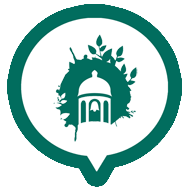The Red Mansion, also known as the House of the Prince, is beautifully situated at the end of Palævej. The fact that the house can be seen from a long distance away tells you that this is an old and important building. The Red Mansion was built by Prince Æmil August, the brother of Duke Frederick Christian, following his retirement from his career as lieutenant general. In 1765, the house was completed as a “retirement home” for the prince.
When the German garden theorist C.C.L. Hirschfeld visited Augustenborg Palace Gardens in the late 18th century, he described the house as “The philosophical home of Prince Æmil” and as an “ideal of happy solitude, secluded from the world as only a wise man would do”.
In addition to his interest in books and philosophy, Prince Æmil also enjoyed the natural world, taking particular delight in the form of his beloved garden. The house was surrounded by aviaries with exotic birds, and the lush garden was dedicated “half to flora and half to pomora”, i.e. both to flowers and fruit trees. Naturally, there was also a large kitchen garden, a fish pond with a small bridge and a peacock yard. So altogether a large undertaking, which the prince insisted on taking care of himself. Only after the prince had died was the garden handed over to the court gardener. The peacocks were probably not only for decoration – they also were a feast, served on large silver plates with heads and tail feathers.
The House of the Prince was perhaps more modest than would be expected for a man of his status, but it was both well-proportioned and spacious. It was certainly enough to keep the unmarried retired general happy. He lived here with his small staff until his death in 1786. In his will, the prince stated that the right of use of the house with all its contents, “furniture, utensils and linen”, should be enjoyed for life by his niece, Princess Louise Christine Caroline.
Princess Louise liked her uncle Æmil very much and gladly took over both the house and the garden, but her father, the duke, had bigger plans. He built the White Mansion and laid out a larger Baroque-style garden.
Since then, the Red Mansion and the adjoining stable buildings have served several different purposes. For a period the adjoining building was used as the town’s prison.
Today, the Red Mansion is part of Augustiana Art Park & Art Gallery. Behind the house is Augustenborg Forest, where you, can hear more, including the story of the Rabbit Lake. For directions, please see the map in the car park in the Forest.

